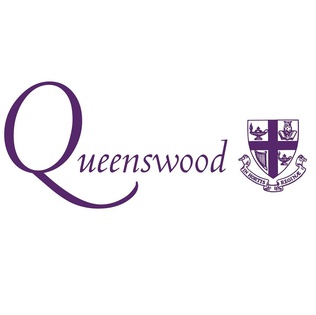
Queenswood School is a girls-only private school located near Hatfield, Hertfordshire, twenty miles from London. It offers admission at ages 11, 13 or 16.

Agnes Maude Royden, later known as Maude Royden-Shaw, was an English preacher, suffragist and campaigner for the ordination of women.
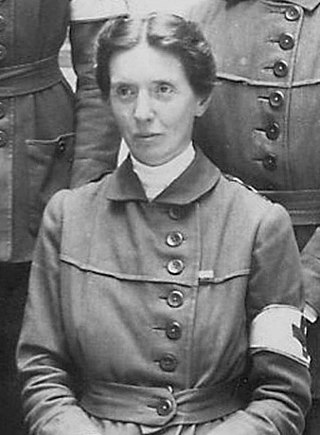
Flora Murray was a Scottish medical pioneer, and a member of the Women's Social and Political Union suffragettes. From 1914 to the end of her life, she lived with her partner and fellow doctor Louisa Garrett Anderson.

Dame Louisa Brandreth Aldrich-Blake was a pioneering surgeon and one of the first British women to enter the world of modern medicine.
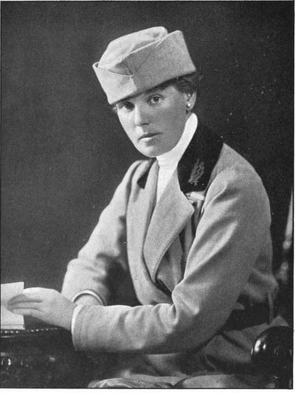
Dame Anne Louise McIlroy, known as Louise McIlroy, was a distinguished and honoured Irish-born British physician, specialising in obstetrics and gynaecology. She was both the first woman to be awarded a Doctor of Medicine (MD) degree and to register as a research student at the University of Glasgow. She was also the first woman medical professor in the United Kingdom.

Ethel Larcombe was a British female tennis player and badminton player. She won the ladies' singles tennis title at the 1912 Wimbledon Championships as well as 11 badminton titles at the All England Badminton Championships.
Muriel Alice Wace was an English children's book author known by the pseudonym Golden Gorse. Her works, which include The Young Rider: Ponies for Health and Pleasure (1928) and the novel Moorland Mousie (1929), develop the genre of pony books and promote the British native Exmoor pony.
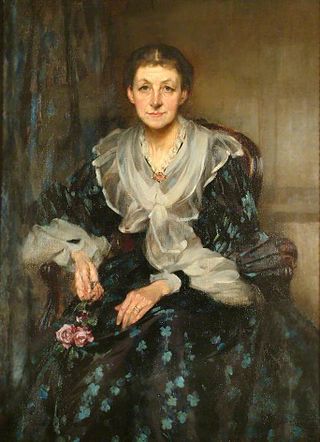
Matilda Ellen Bishop was the first Principal of Royal Holloway College, University of London and was responsible for establishing many of the early traditions at the institution. Her father was a scholarly Church of England clergyman.

Isabel Galloway Emslie, Lady Hutton CBE was a Scottish physician who specialised in mental health and social work.

The Scottish Women's Hospitals for Foreign Services (SWH) was founded in 1914. It was led by Dr Elsie Inglis and provided nurses, doctors, ambulance drivers, cooks and orderlies. By the end of World War I, 14 medical units had been outfitted and sent to serve in Corsica, France, Malta, Romania, Russia, Salonika and Serbia.

Muriel Thompson was a decorated Scottish World War I ambulance driver, racing driver and suffragist.

Dame Constance Elizabeth D'Arcy was an Australian obstetrician and gynaecologist. She was Deputy Chancellor at the University of Sydney from 1943 until 1946. In 1935, she was made a Dame of the Order of the British Empire (DBE).

Violetta Thurstan, MM was an English nurse, author, weaver, and administrator whose work included help for refugees and prisoners of war. She knew several languages, travelled frequently and wrote a number of books. The first was about her experiences of nursing in dangerous troublespots during the First World War. She was honoured by three countries for her courage while nursing in the war, and was awarded the Military Medal.
Olive Muriel Cook, was an English writer and artist who published county guides, as well as writing various books accompanied by the work of her husband, the photographer Edwin Smith.
Sarah Mary Josephine Winstedt was an Irish-born physician, surgeon and suffragist. She spent most of the period of 1913–1935 in British Malaya, and for her contributions to colonial healthcare she was posthumously inducted into the Singapore Women's Hall of Fame. She served in a medical capacity in both world wars, and was awarded the King George V Silver Jubilee Medal in 1935.
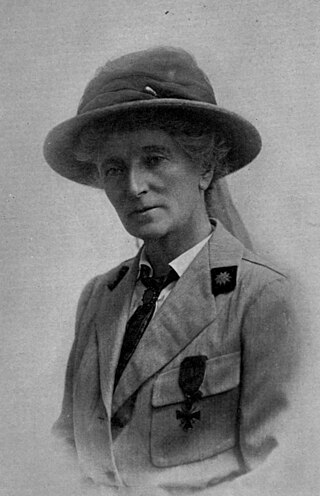
Katherine Mary Harley was a suffragist. In 1913 she proposed and organised the Great Pilgrimage on behalf of the National Union of Women's Suffrage Societies. During the First World War she helped to found and organise the Women's Emergency Corps.
Elizabeth Anne "Eliza" Bostock was a British promoter of women's education. She became a trustee at Bedford College after attending lessons there herself. At the time Bedford College was one of the few places where women might receive something approaching university level education. Bedford College was said to be the first British institution run by women and Bostock was the "honorary principal".

Evelyn Groesbeeck Mitchell was an American entomologist and physician.

Hon. Lavinia Lyttelton was a British promoter of women's education in the United Kingdom.

Lucy Helen Muriel Soulsby was a British headmistress of Oxford High School for Girls. She notably opposed women's suffrage.
















